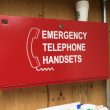BEACONS OF HOPE
On Dec. 26, the fourth-largest earthquake ever measured shook the Indian Ocean floor. The cataclysmic shock generated 20-foot to 50-foot waves that struck surrounding coastal areas with unforgiving force.
Since then, images and stories from the tsunami-torn areas of southeast Asia and India have left an indelible impression on citizens worldwide, which has led to an unprecedented relief effort.
By themselves, the numbers are tragically alarming (see map). The toll of those counted as missing or dead as of press time was greater than the population of Toledo, Ohio — the 58th-largest U.S. city. More people have been displaced by the tsunami than live in Detroit, the 10th-largest city.
And those are just the official counts, which most believe are underestimated. Multiple sources indicate that population figures for poor, small villages in many islands and coastal regions probably had not been updated accurately in years. With the tsunami literally washing away some of these low-lying communities, there will be no way to know how many truly were affected.
But it could have been worse, were it not for some instances of fortunate timing that allowed vital communications to occur when needed most.
Hams on the spot
For Charles Harpole, the December trip was supposed to be a getaway. A University of Central Florida professor and amateur-radio enthusiast (K4VUD), Harpole planned to visit his wife’s family in Thailand and to be part of the contingent to transmit the first ham message in 17 years from the Andaman and Nicobar Islands off the coast of Sri Lanka.
While the trip — known as a DXpedition in ham lingo — had historical significance for amateur radio, Harpole’s communications prior to the trip included references to “wonderful” beaches “with no people and no trash,” “super” diving and “mostly empty” hotels at reasonable prices.
“When we go on an expedition, it’s primarily for fun,” Harpole said.
That changed on the morning of Dec. 26, when a mighty earthquake shook the island. Harpole, in a fifth-floor room of the hotel, braced himself in a doorway as items fell around him. When the quake quieted, Harpole joined other hotel guests outside.
“We noticed that the sea had turned quite brown near the coast and dark gray further out, where it had been clear before,” Harpole said. “I told everyone there that I thought there would be a tsunami.”
Harpole turned out to be correct, but no massive waves hit Little Andaman.
Using hotel generators for power, the ham expedition team set up radios on the lawn outside the hotel to make “serious calls” for help and to relay messages. The next day, team leader Bharathi Prasad took a three-wheel taxi to the capitol to offer assistance. The offer was quickly accepted, and some team members were dispatched via helicopter to other nearby islands, including Car Nicobar, which was almost completely devastated.
“There were some Nicobar Islands that were totally washed over,” Harpole said. “There were some villages that were totally eliminated … I’ve seen pictures. There was a village there, but now there’s just a bunch of poles sticking up where there were houses.”
Hams played a vital role in the recovery effort on Car Nicobar, where the amateur radio operators set up their gear in a government official’s house.
“For many hours every day, they were the only contact with the outside world,” Harpole said. “They were calling for everything, from the most urgent assistance to the most mundane. For two weeks, the hams often were the only form of communication.”
Ironically, ham radios had been prohibited on the islands for almost two decades — a ban that had been lifted just six weeks before. Harpole said the ruling was overturned largely because of the efforts of influential Indian political figure Sonia Gandhi, a ham enthusiast (VU2SON) who declined the prime minister post last year.
Otherwise, many Andaman and Nicobar islands likely would have been unable to communicate their recovery needs, Harpole said.
“If the hams had not been there, it’s doubtful that they would have been dispatched from the mainland, given the Indian government’s attitude toward hams,” Harpole said. “But it turned out to be a magnificent display of the value of ham radio.
“It was just one of those things — we happened to be in the right place at the right time,” he said.
Indeed, despite having his trip ruined by one of the largest earthquakes in history, Harpole said he considers himself lucky. His wife and her family were safe. Physically, his discomfort was limited to his forearm, which mosquitoes ravaged as he slept on a couch outside the Little Andaman hotel.
Just in time
In Penang, a resort city in Malaysia, officials had spent most of December transitioning to a Motorola VHF system known as the Penang Emergency Ambulance Radio Link (PEARL). It marked Penang’s first foray into interoperable communications between medical facilities.
Teo Aik Howe, head of Penang Hospital’s emergency department, said that the network was deemed fully functional in mid-November. After that, workers from the member agencies were trained throughout the month of December, with the last session being completed on Dec. 21.
Five days later, the training was put to use.
When the first destructive wave hit without warning, chaos predictably ensued, Teo said.
“But, after that, I think very quickly things were brought into line, and the PEARL system played no small role in that,” Teo said.
Despite pushing the system “to its capacity” in the aftermath of the tsunami, the PEARL was reliable and stable throughout, allowing officials to coordinate ambulances from the various agencies, including local hospitals, local health clinics and the Red Cross.
Such interoperability was a stark contrast to the previous communication “system,” which Teo said would have been extremely inefficient in a disaster situation such as this.
“Without this system, there would have been quite a few things I could not do,” Teo said. “I would have had to use a [cellular]-phone system to get the base and ask them to give me the base hospital. And one thing we learned from this — during times of disaster, the traffic on the [cellular] system is very high, and it’s hard to get through.”
Having a dedicated communications system also let hospitals and clinics get real-time information about situations in the field, allowing medical staffs to better prepare for the legions of victims and coordinate their most appropriate destinations, Teo said.
While the PEARL had been designed for these purposes, Teo said the system opened some eyes for another reason, as a second, smaller wave approached the Penang coast two hours after the first wave hit.
“When the ambulances saw the second wave coming in, they were able to inform other units of the second wave,” he said. “It turned out that none of the units were in any danger, but we quickly realized how valuable this could be.”
Teo said he only wishes a similar warning could have been communicated for the first wave.
“It would have been fairly easy to evacuate the beaches and coastal areas,” he said. “I’m not sure if that would have made a difference in the parts of Sri Lanka and India that were hardest hit, but in Penang and Thailand, most of the casualties were people who were on the beaches. If we could have warned them, we could have saved countless lives.”
That lament aside, Teo said the Penang community could have been hurt even worse if the tsunami had hit a month or two earlier. In fact, from a communications perspective, the PEARL system held up well, he said.
“I don’t know how to say this, but it’s a bit lucky that this happened when it did — our last training session finished just before Christmas, on the 21st,” Teo said. “Because it is such a new system, the training of users had just been done and everything was fresh on their minds.”
Meanwhile, some officials had sought an expansion of the PEARL system to other neighboring communities. Teo is optimistic that the performance of the network under the most stressful of situations will make it easier to break down potential political barriers so that the expansion can become a reality.
Expansion on the fly
In Thailand, a long-standing problem of inadequate communications infrastructure became exacerbated when the tsunami hit, according to Thunyawat Prachuabmoh, vice president of business development for M-Link Asia.
Although the city of Phuket (pronounced POO-ket) is one of the premier beach resort areas in Asia, communications in the region was limited to a VHF amateur-radio system and an analog 800 MHz system run by Thailand’s ministry of the interior.
“When the tsunami hit, the power went out, and there was no communication from the area hit by the disaster,” Prachuabmoh said. “Both of [the communications systems] went out in the disaster area, and about 30% of the disaster area wasn’t even covered in the first place.”
Instead of being able to radio relief needs directly from the disaster area, first responders inefficiently were forced to gather their notes and travel to downtown Phuket, where an Echolink system had been established to communicate with the outside world, Prachuabmoh said.
To alleviate the problem, M-Link installed four Motorola-donated repeaters — powered by portable generators — on existing TV towers in a matter of days. The repeaters not only permitted radio communications in the disaster zone, it also provided coverage to the areas that were not covered before and increased the capacity of the network, Prachuabmoh said. In fact, the coverage even extended some distance beyond the shore, which greatly aided the navy in its efforts.
Completing the communications package for the area was Motorola’s donation of badly-needed handsets that became more valuable as members of foreign-aid teams arrived on the scene, Prachuabmoh said.
“They didn’t just lack frequencies and coverage, they lacked the handsets,” he said. “So they were glad to get 300 new handsets.”
These donations to Phuket were among many made by Motorola, which halted all manufacturing worldwide for three days to produce communications equipment for the tsunami-relief effort, said David Lum, director of Motorola’s Asia/Pacific support operations.
“The biggest problem was that the governments themselves were not prepared for an incident of this size,” Lum said. “They didn’t have enough radios for everyone.”
While the lack of an early-warning system has been scrutinized by the United Nations, Prachuabmoh noted that there was no record of a tsunami ever hitting Thailand before. Although the prime minister has created a three-stage plan to establish an early-warning system in the country, Prachuabmoh said it would be a general disaster warning system, not one that is tsunami-centric.
“Experts here predict [there might not be another tsunami] for the next 200 years,” he said.
Certainly, that’s the hope of everyone, after having thousands of Thai citizens die during this tragedy. In the face of such a staggering loss of life, Prachuabmoh takes some solace in the fact the additional 800 MHz repeaters have left the coastal area much better prepared to face communications challenges in the future.
“In the area that didn’t have any coverage, it’s the best thing that ever happened, from a communications standpoint” Prachuabmoh said.
For LMR, tsunamis better than hurricanes
Taking the high ground lets private systems withstand disaster
Communications in the Indian Ocean coastal regions hit by the tsunami varied greatly, with observers noting that the differences generally could be tracked to the proximity to the waves and the areas’ existing infrastructure.
In a few low-lying areas, including some Nicobar Islands, everything was submerged and all communications were lost. However, such instances were rare, said David Lum, director of Motorola’s Asia/Pacific support operations.
Matthew Parry, team leader of the American Red Cross relief team in Sri Lanka, said rescue workers in that area relied heavily on satellite phones and cell phones that could be adapted to local frequencies via a SIMM card.
Although Parry spent most of his time on Sri Lanka’s east coast — away from the hardest-hit areas of the country — he said telecommunications generally was not a problem by the time he arrived a week after the tsunami hit. In fact, the Red Cross telecommunications team returned to its base in Spain during January.
“They went home early because [the telecommunications situation] just wasn’t that bad,” Parry said.
Similarly, most land mobile radio (LMR) systems suffered little damage, Lum said. As devastating as the tsunami was, the water gravitates to the lowest possible spot, which meant the LMR networks — whether manufactured by Motorola, Kenwood or Icom — typically were not impacted.
“In this particular case, the tsunami wasn’t as bad as the hurricanes we had in Florida, because they were airborne threats,” Lum said. “Most base stations for the government systems are located on hilltops to maximize coverage … and the power supplies tend to be further inland. So private government LMR service generally was maintained with no problem.”
Furthermore, Lum said public-safety-grade towers are built to withstand the force of a tsunami wave — with one important caveat.
“Could it stand up to the wave itself? Yes,” Lum said. “Could it withstand a wave carrying a lot of debris? In some cases, no. If multiple cars being carried in a wave hit a tower, it would go down.”
Although most of the LMR systems were maintained, they were not built to withstand the number of users that the unprecedented relief effort generated from foreign lands, Lum said. In many cases, relief workers brought their own communications equipment; in others, Motorola and other radio vendors supplied additional handsets.
There were instances where additional repeaters were installed to add capacity, but Lum said fundamental radio discipline typically has prevented capacity from being a problem in the relief effort.
“Certainly, the systems were not designed to handle that many relief agencies coming onto the system,” Lum said. “On the other hand, the relief agencies that were helping were pretty savvy and professional — they generally said what needed to be said clearly and concisely, then they got off.”
Many other relief groups brought their own communications infrastructures. One such effort was led by the U.S. Navy off the coast of Banda Aceh, an Indonesian city located near the epicenter of the quake. The almost total devastation to the coastal area left about a third of the city’s 320,000 residents dead or missing.
“It’s almost incomprehensible,” said Jon Marcy, director of Navy programs for Nortel Networks’ federal solutions group. “Literally, towns that were there are no longer there anymore. Towns of 30,000 people now have 600.”
Unlike some areas further from the epicenter, Banda Aceh went almost two months without any form of communications for its citizenry, Marcy said.
“Everything was pretty much wiped out, but in the last two weeks, the government-owned telephone company has managed to deploy cellular capabilities,” Marcy said. “But it’s not very good coverage, and it’s not very available, because of the high demand.”
Marcy said LMR communication in the area remained intact, but the single-channel, conventional radio system did not come close to providing the capacity needed for the massive recovery effort. At the request of the U.S. Navy, Nortel delivered a “fly-away” transportable wireless solution — “a cell site in a package,” Marcy said.
Although requested for the U.S.S. Abraham Lincoln, a change in plans resulted in the Nortel solution being deployed on the USNS Mercy, a hospital ship with 1000 beds and 10 operating rooms, Marcy said. With the Nortel gear, a GSM cell site was deployed on board the vessel, which was anchored 3 to 5 miles from shore. The high-powered base station provided 900 MHz GSM coverage for the 60 handsets at least 3 miles inland, Marcy said.
“Our solution was a closed solution — it only recognized the handsets we gave out with the system,” Marcy said.
Although Nortel had contributed to similar projects through partnership, this marked the first time the traditionally commercial vendor had undertaken a project directly serving the government, Marcy said.
“This is new for Nortel,” he said. “[With a government project,] you have to be prepared for change. We learned a lot about ourselves and the term ‘flexibility.’ I think that’s the big difference between the commercial sector and the government sector — the tempo you have to work at.”
— Donny Jackson

















